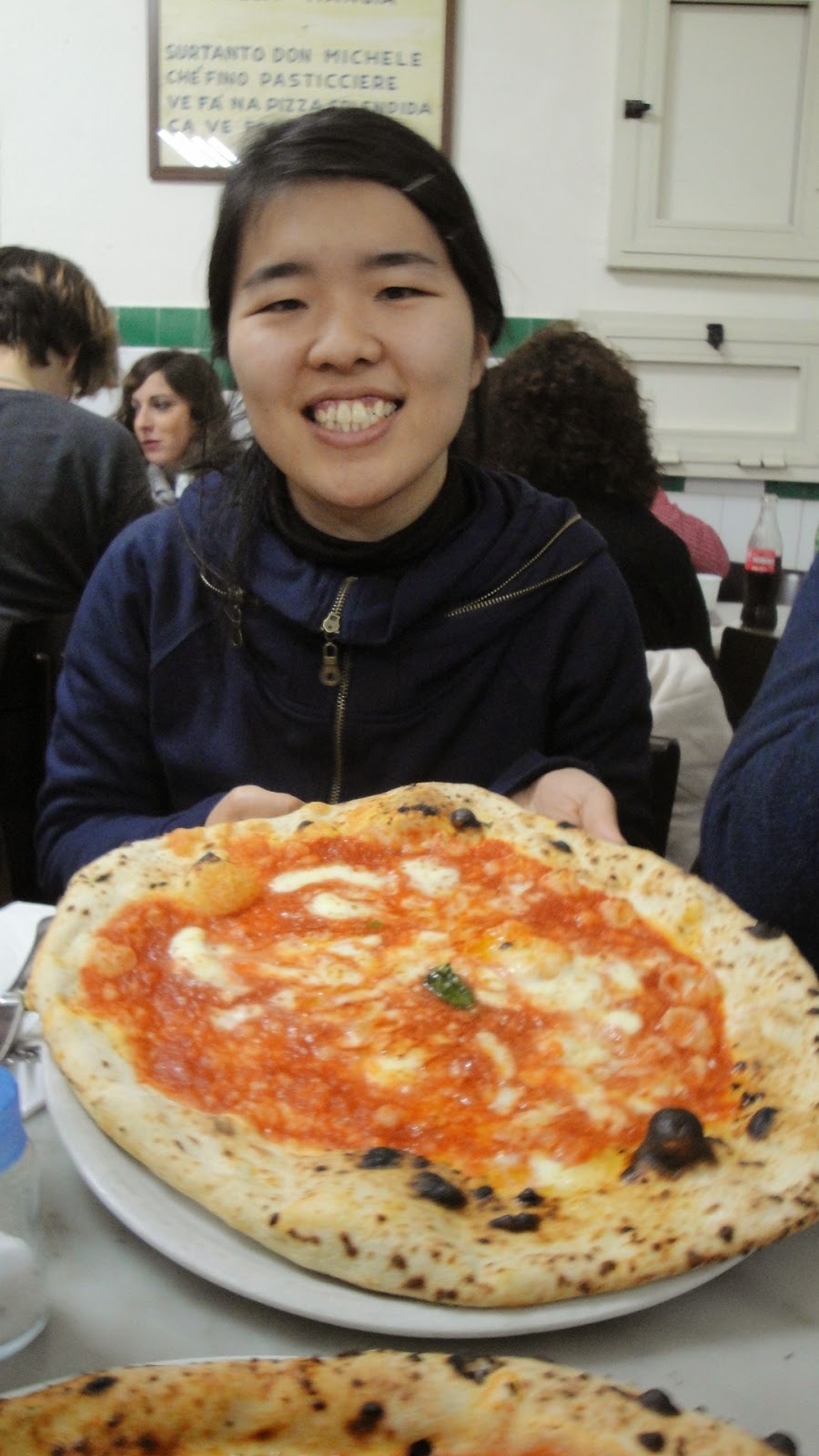 |
| Emi con la lettera delle colleghe ed il libretto dei bambini |
Per me, tutta la mia vita in Italia è stata bellissima.
Sopratutto il periodo dell'internship è stato meraviglioso.
Ho imparato tante cose dalle esperienze dell'internship.
Perché hai voluto fare un internship in un asilo nido?
Sopratutto il periodo dell'internship è stato meraviglioso.
Ho imparato tante cose dalle esperienze dell'internship.
Perché hai voluto fare un internship in un asilo nido?
Prima di tutto mi piacciono i bambini.
Poi, non volevo lavorare davanti al computer tutto il giorno.
Volevo fare un internship attivo.
Quindi ho scelto un asilo nido.
Momenti da ricordare della tua internship?
Poi, non volevo lavorare davanti al computer tutto il giorno.
Volevo fare un internship attivo.
Quindi ho scelto un asilo nido.
Momenti da ricordare della tua internship?
Tutti momenti sono indimenticabili.
Quando i bambini mi si avvicinavano chiamando il mio nome "EMI!!!",
mi rendevano felicissima.
Un giorno, una bambina di 1 anno, mi ha chiesto di abbracciarla.
E dopo che l'ho abbracciata, mi ha dato un bacino improvvisamente.
Un altro giorno, un bambino è caduto giocando sul tappetino.
Poi è venuto da me, mi ha mostrato la guancia e io gli ho detto "Non è niente".
Ma lui non andava via e continuava a mostrarmi la guancia.
Ho cercato di capire perché rimaneva, e mi è venuta un'idea.
"Ah, vuole un bacino!!"
Così gli ho dato un bacino sulla guancia, lui è andato via sorridendo soddisfatto.
Per me tutti i momenti sono carinissimi!!
Che cosa hai imparato da questa esperienza?
Quando i bambini mi si avvicinavano chiamando il mio nome "EMI!!!",
mi rendevano felicissima.
Un giorno, una bambina di 1 anno, mi ha chiesto di abbracciarla.
E dopo che l'ho abbracciata, mi ha dato un bacino improvvisamente.
Un altro giorno, un bambino è caduto giocando sul tappetino.
Poi è venuto da me, mi ha mostrato la guancia e io gli ho detto "Non è niente".
Ma lui non andava via e continuava a mostrarmi la guancia.
Ho cercato di capire perché rimaneva, e mi è venuta un'idea.
"Ah, vuole un bacino!!"
Così gli ho dato un bacino sulla guancia, lui è andato via sorridendo soddisfatto.
Per me tutti i momenti sono carinissimi!!
Che cosa hai imparato da questa esperienza?
 |
| Emi in Italia |
Ho imparato tante cose.
L'italiano che si usa all'asilo nido mi interessava molto.
Una collega mi ha insegnato che in Italia all'asilo nido ai bambini si insegna di "MANGIARE" prima di tutto.
Ho avuto anche modo di vedere il rapporto che c'è nella famiglia italiana, i modi di pensare e di cullare i bambini.
Credi sia sia importante abbinare lo studio della lingua italiana all'intership, così com'è strutturato il programma internship dell'Istituto Europeo?
Si, credo che sia importante.
Se io non avessi studiato l'italiano a sufficienza, non avrei potuto capire o sapere le cose del lavoro così bene.
Ho studiato non solo la lingua ma anche la cultura italiana per 8 mesi all'ISTITUTO EUROPEO,
ho potuto imparare tante cose dai bambini e dalle altre educatrici.
Hai avuto una buona esperienza all'Istituto Europeo?
Ho conosciuto tanti amici da tutto il mondo.
Per me conoscere queste persone è come aprire la porta del mondo.
Mi hanno insegnato la loro cultura, lingua, modi di pensare ecc.
Parlare con loro (ovviamente in italiano) mi divertiva molto.
Con loro siamo andati in molti bei posti, ad esempio Pisa, le Cinque Terre, buoni ristoranti, pizzerie, bar ecc.
Raccomanderesti questo programma?
L'italiano che si usa all'asilo nido mi interessava molto.
Una collega mi ha insegnato che in Italia all'asilo nido ai bambini si insegna di "MANGIARE" prima di tutto.
Ho avuto anche modo di vedere il rapporto che c'è nella famiglia italiana, i modi di pensare e di cullare i bambini.
Credi sia sia importante abbinare lo studio della lingua italiana all'intership, così com'è strutturato il programma internship dell'Istituto Europeo?
Si, credo che sia importante.
Se io non avessi studiato l'italiano a sufficienza, non avrei potuto capire o sapere le cose del lavoro così bene.
Ho studiato non solo la lingua ma anche la cultura italiana per 8 mesi all'ISTITUTO EUROPEO,
ho potuto imparare tante cose dai bambini e dalle altre educatrici.
Hai avuto una buona esperienza all'Istituto Europeo?
Ho conosciuto tanti amici da tutto il mondo.
Per me conoscere queste persone è come aprire la porta del mondo.
Mi hanno insegnato la loro cultura, lingua, modi di pensare ecc.
Parlare con loro (ovviamente in italiano) mi divertiva molto.
Con loro siamo andati in molti bei posti, ad esempio Pisa, le Cinque Terre, buoni ristoranti, pizzerie, bar ecc.
Raccomanderesti questo programma?
Si, raccomanderei davvero questo programma.
Se venite a Firenze per imparare l'italiano all'ISTITUTO EUROPEO, fate anche l'internship!!
Farete un'esperienza meravigliosa!!
Se venite a Firenze per imparare l'italiano all'ISTITUTO EUROPEO, fate anche l'internship!!
Farete un'esperienza meravigliosa!!
Contact us! info@istitutoeuropeo.it - www.istitutoeuropeo.it
Like us! Facebook Istituto Europeo













